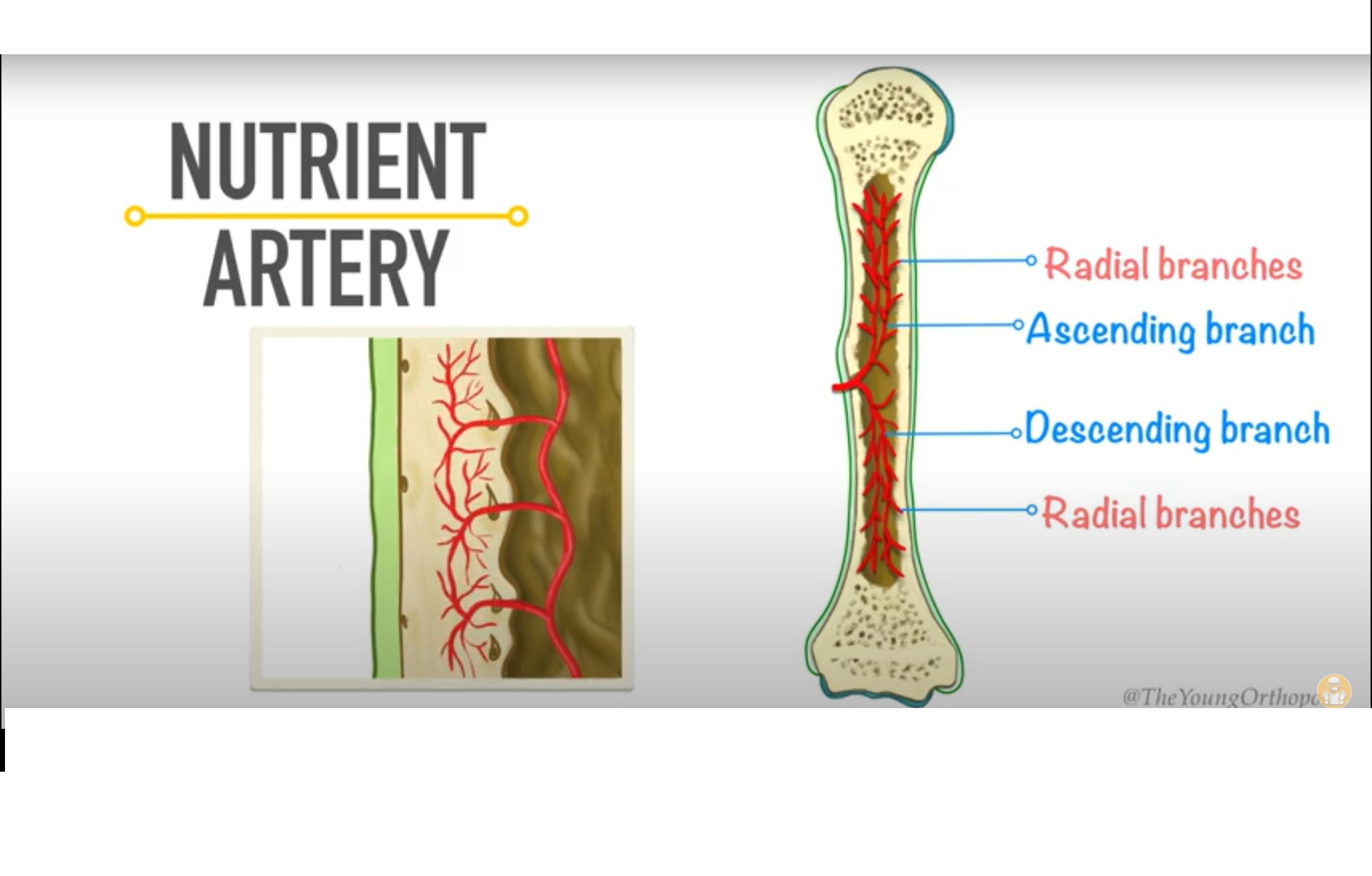Courtesy: Sameer Qureshi, Consultant Orthopaedic Surgeon, Ujjain, MP
BLOOD SUPPLY OF THE LONG BONE
BASIC ANATOMY OF THE LONG BONE
The elongated central part of the long bone is called the diaphysis. The enlarged area of the bone at the ends is called the epiphysis and the intermediate bone segment between the two is called the metaphysic s. The articular ends of the epiphyseal surface is covered by articular cartilage .The rest of the bone is covered by tough connective tissue called the periosteum. The nutrient foramen is an oblique canal usually situated in the diaphysis of the long bone.
ARTERIAL SUPPLY OF THE LONG BONE
Blood supply of the long bone accounts for 5-10% of the cardiac output. A typical long bone receives blood supply from various sources. They are the Nutrient arteries , Epiphyseal arteries , Metaphyseal arteries and periosteal arteries .
THE NUTRIENT ARTERY
The nutrient artery supplies directly from major systemic arteries. It enters the long bone through the nutrient foramen. It then divides into ascending and descending branches. These branches gives of smaller parallel arteries called the radial branches .These branches supply the bone marrow and inner third of the compact bone of the diaphysis. The ascending and descending branches at the metaphysis divides into smaller spiral branches which anastomoses with the metaphyseal and epiphyseal arteries.
THE METAPHYSEAL ARTERY
Metaphyseal arteries arising from the anastomosis around the joint enters the metaphysis at the margin of the capsule attachment. These anastomose with the spiral arteries making the metaphysic the most vascular area of the long bone.
THE EPIPHYSEAL ARTERY
Epiphyseal arteries are derived from periarticular vascular arcades. The epiphysis has openings that allows arteries to go in and out. In children the epiphyseal arteries are separated from the metaphyseal arteries due to the presence of an epiphyseal plate. In adults the epiphysis and metaphysis is fused together following the arrest of growth plate. Here the epiphyseal arteries freely anastomose with metaphyseal and nutrient arteries.
When epiphyseal cartilage and articular cartilage are continuous, the epiphyseal artery pierces the epiphyseal cartilage and supplies the epiphysis. If these arteries are damaged in epiphyseal separation, avascular necrosis may occur. In other bones where the epiphyseal cartilage is not continuous with the articular cartilage, the epiphyseal vessels enters the bone without piercing the growth plate. This helps in preventing avascular necrosis on epiphyseal separation.
THE PERIOSTEAL ARTERY
The periosteum has rich blood supply from the blood vessels that anastomose beneath the periosteum. Periosteal arteries act as a low pressure system and penetrate bone at the sides of attachment of the facial sheath or aponeurosis. They enter the Volksmann canal and supply roughly the outer one third of the compact bone of the diaphysis.
VENOUS DRAINAGE
Long bones drain into central venous sinus , then drains to nutrient veins ,then to periosteal vein and to emmissery veins successively.

Leave a Reply